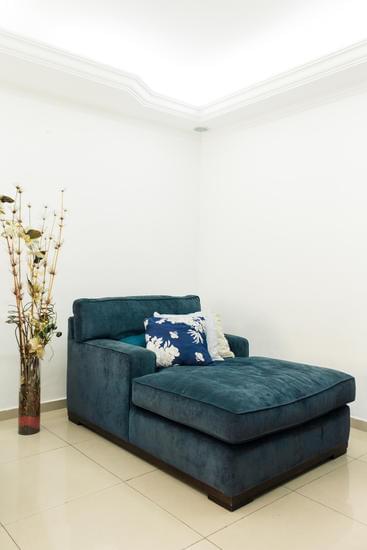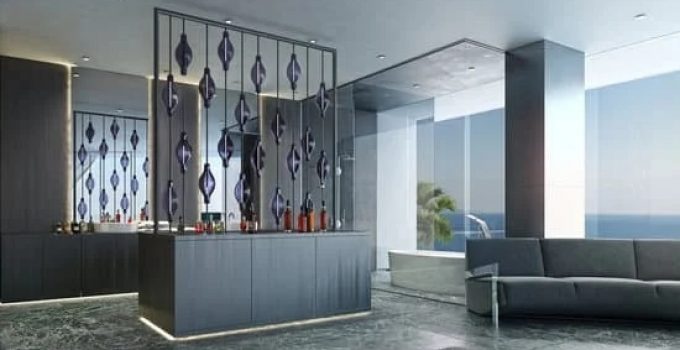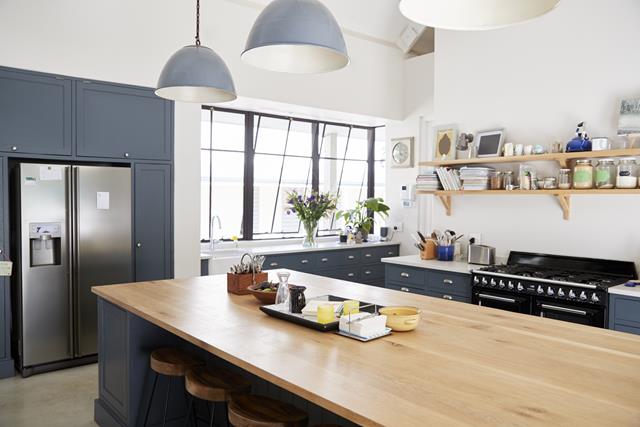Colonial-style homes exude a timeless charm and elegance that continue to captivate homeowners looking to infuse their space with a touch of historical significance. The allure of Colonial architecture lies in its symmetrical design, classical proportions, and traditional details that harken back to the early American settlers. If you’re wondering how to decorate your colonial home, understanding the unique characteristics of this style is essential in creating an authentic and cohesive look.
With roots dating back to the 1600s, Colonial homes are steeped in history and architectural heritage. These homes typically feature elements such as center entryways, double-hung windows, and gabled roofs, all contributing to their iconic appearance. Before embarking on your decorating journey, take the time to assess your colonial home’s architecture and historical significance. Understanding the layout and features of your home will guide you in selecting decor elements that complement its unique design and character.
One of the key aspects of decorating a colonial home is choosing a color palette that reflects the historical accuracy of this architectural style. Soft hues inspired by nature such as ivories, blues, greens, and warm browns are common choices for Colonial interiors.
By incorporating historically accurate paint colors, you can evoke the timeless appeal of early American homesteads while creating a cohesive backdrop for your decor choices. Stay tuned as we delve into more tips on how to bring out the best in your colonial home through thoughtful decoration choices.
Getting Started
When looking at how to decorate my colonial home, the first step is to assess the architecture and historical significance of the property. Colonial-style homes are known for their timeless elegance and traditional charm, making them a popular choice for homeowners who appreciate classic design. These homes often feature symmetrical facades, gabled roofs, and multi-pane windows, reflecting the architectural styles of early American settlers.
One key aspect to consider when decorating a colonial home is preserving its historical integrity while still adding personal touches. Take note of any original features such as crown molding, wainscoting, or exposed beams, as these can inform your decor choices. Understanding the history of your home can also help guide you in selecting period-appropriate furnishings and decor items that complement its overall style.
In addition to assessing the architectural elements of your colonial home, consider how you can enhance its curb appeal with landscaping and exterior details. Traditional front doors with sidelights, window shutters, and brick or clapboard siding are all characteristic of colonial architecture. By paying attention to these details both inside and outside your home, you can create a cohesive and authentic colonial aesthetic that celebrates its unique charm.
| Element | Recommendation |
|---|---|
| Architectural Features | Preserve original elements like crown molding and wainscoting. |
| Furnishings | Select period-appropriate pieces that complement the home’s style. |
| Curb Appeal | Add traditional landscaping and exterior details to enhance authenticity. |
Color Palette
When decorating a colonial home, selecting the right color palette is crucial to maintaining the historical authenticity of the space. Colonial-style homes are known for their classic and elegant look, often featuring colors that reflect the time period in which they were built. To achieve an accurate paint color scheme for your colonial home, it is essential to consider the architectural style and historical significance of the property.
Researching Colonial Color Trends
Before painting your colonial home, take the time to research traditional color schemes from the colonial era. Typically, these homes were painted in muted tones such as earthy reds, soft yellows, rich greens, and shades of white. It is important to choose colors that complement each other and enhance the overall aesthetic appeal of your colonial home.
Consider Your Home’s Architecture
When selecting paint colors for your colonial home, consider the architectural style and features of the property. Certain hues may highlight specific design elements or architectural details unique to colonial homes. For example, a darker shade can help accentuate decorative trim work or molding, while lighter colors can make rooms feel more spacious and inviting. By aligning your color choices with your home’s architecture, you can create a cohesive and harmonious design scheme.
Maintaining Historical Accuracy
To ensure historical accuracy in your colonial home decor, opt for paint colors that were commonly used during the time period in which your home was built. Consulting with historical preservationists or experts in colonial architecture can provide valuable insights into authentic color choices. By staying true to traditional paint colors and embracing the charm of yesteryear, you can create a timeless aesthetic that honors the heritage of your colonial home.
Furniture Selection
When it comes to decorating a colonial home, one of the key elements to consider is the furniture selection. Colonial style furniture is known for its classic and timeless look, often made from sturdy wood with simple lines and traditional designs. Whether you are aiming for an authentic colonial feel or opting for reproduction pieces, there are several factors to keep in mind when selecting furniture for your home.
To start, take a look at the architecture and layout of your colonial home. Consider the style of the house and the period it was built in to get a better sense of what type of furniture would complement the space. It’s important to choose pieces that will enhance the historical significance of your home while also providing functionality and comfort.
When looking for authentic colonial furniture pieces, consider visiting antique shops, auctions, or estate sales. You may come across unique pieces that have stood the test of time and can add character to your home. If authentic pieces are out of reach or budget constraints limit your options, there are many reputable companies that specialize in reproducing colonial-style furniture. These well-crafted reproductions capture the essence of colonial design while offering more affordable options for decorators.
To help you navigate through the process of selecting furniture for your colonial home, here are some key considerations and tips:
- Look for furniture made from solid hardwoods like cherry, oak, or mahogany
- Opt for simple designs with straight lines and minimal ornamentation
- Consider mixing antique and reproduction pieces for a curated look
By taking these factors into account and following these guidelines, you’ll be on your way to creating a beautifully decorated colonial home that pays homage to its historic roots while reflecting your own personal style. Remember that finding the right furniture pieces is essential in achieving an authentic colonial look that is both elegant and inviting.
Textiles and Fabrics
When it comes to decorating a colonial-style home, incorporating traditional patterns like toile and chintz can enhance the historical charm of the space. Toile, a classic French fabric featuring repetitive patterns of pastoral scenes or intricate designs, adds an elegant touch to Colonial interiors. Similarly, chintz, a glazed cotton fabric with colorful floral motifs, can bring a sense of warmth and coziness to your rooms.
Choosing the Right Fabric
When selecting textiles for your colonial home, opt for fabrics that reflect the time period in which the style originated. Look for toile and chintz in colors such as muted blues, greens, reds, and yellows for an authentic colonial look. Consider incorporating these fabrics into upholstery, drapery, bedding, and accent pillows to tie the entire room together.
Mixing Patterns
To create a cohesive look while incorporating traditional colonial patterns like toile and chintz into your decor, consider mixing different prints and scales. Pair a bold toile print with a subtle chintz pattern or mix floral chintz with striped toile for an interesting contrast. Be sure to balance busy patterns with solid colors to avoid overwhelming the space.
Accessorizing With Textiles
In addition to using toile and chintz fabrics for larger furniture pieces and drapery, you can also incorporate them into smaller details within your colonial home decor. Consider adding throw blankets in these classic patterns, using table runners or placemats on dining tables, or opting for upholstered accent chairs featuring traditional prints. These small touches can further enhance the colonial aesthetic of your home.
Wall Decor
When it comes to decorating a colonial home, the wall decor plays a significant role in enhancing the historical charm and character of the space. To effectively decorate your walls with colonial-inspired artwork and mirrors, consider following these tips:
- Choose Artwork Wisely: Opt for pieces that reflect the colonial era, such as landscapes, portraits, or still-life paintings. Look for traditional frames made of wood or brass to complement the artwork.
- Hang Mirrors Strategically: Colonial homes often feature intricate mirrors with decorative frames. Place them strategically to reflect light and create a sense of spaciousness. Consider hanging mirrors above mantels or in entryways for an elegant touch.
- Gallery Wall Display: Create a gallery wall with a mix of colonial-inspired artwork and mirrors. Arrange them in a grid pattern or asymmetrical layout for visual interest. Make sure to leave enough space between each piece for balance.
In addition to artwork and mirrors, consider incorporating other wall decor elements like sconces, tapestries, or decorative plates to further enhance the colonial aesthetic of your home. Pay attention to detail when choosing pieces that align with the historical significance of your colonial architecture.
Ultimately, by carefully selecting and arranging colonial-inspired artwork and mirrors on your walls, you can bring a sense of authenticity and elegance to your home. Remember to maintain a harmonious color palette throughout your decor scheme to create a cohesive and inviting space that pays homage to the timeless style of colonial design.
Whether you’re aiming for a formal Colonial Williamsburg look or a more relaxed farmhouse style, wall decor can truly make a statement in your colonial home. Embrace the rich history and traditional elements of colonial design by thoughtfully curating your wall decorations for a space that feels timeless yet welcoming.
Lighting
Chandeliers are a popular choice for colonial homes, as they not only provide ample lighting but also serve as a statement piece in the space. Look for chandeliers with intricate metalwork or classic candle-style bulbs to evoke a sense of history and elegance. Wall sconces can also add a touch of traditional charm to your home, particularly in hallways or living rooms where additional lighting is needed.
In addition to chandeliers and wall sconces, consider incorporating table lamps or floor lamps with vintage-inspired designs. These fixtures can help create a warm and inviting atmosphere while adding visual interest to different areas of your home.
Remember to pay attention to the finish and details of each lighting fixture, ensuring they align with the overall colonial aesthetic you are trying to achieve. By carefully selecting period-appropriate lighting fixtures, you can effectively enhance the beauty and authenticity of your colonial home’s interior design.
| Colonial Lighting Fixture | Description |
|---|---|
| Colonial Chandelier | An ornate chandelier with candle-style bulbs that exudes historic charm. |
| Wall Sconces | Elegant sconces featuring intricate metalwork for additional lighting and decorative appeal. |
| Vintage Table Lamp | A table lamp with a classic design that complements traditional colonial decor. |
Accessories
Colonial-style homes have a timeless appeal that many homeowners find irresistible. The beauty of these homes lies in their historical significance and unique architecture, making them a perfect canvas for decorating with traditional elements. For those wondering how to decorate their colonial home, the key is to embrace the historical charm while adding personal touches to create a warm and inviting space.
When it comes to adding the finishing touches to your colonial home, accessories play a crucial role in tying everything together. Items like brass candlesticks, wooden bowls, and other colonial-style decor pieces can bring an authentic touch to your interior design. These accessories not only add character to your space but also reflect the elegance and sophistication of colonial-era aesthetics.
To effectively decorate your colonial home with the right accessories, it’s essential to strike a balance between authenticity and personal style. Look for pieces that resonate with the history of your home while also reflecting your unique taste and personality.
By incorporating these colonial-style decor items thoughtfully throughout your home, you can create a cohesive look that celebrates both tradition and individuality. So go ahead and explore different options for accessorizing your colonial home – whether it’s with antique finds or modern interpretations of classic designs.
Frequently Asked Questions
How Can I Make My House Look Colonial?
Making your house look colonial involves incorporating key elements such as symmetrical façade, multi-pane windows, and a centrally located door with decorative crown molding. Consider using colors like white, cream, or earth tones for a classic colonial look.
How to Decorate in Colonial Style?
Decorating in colonial style includes utilizing traditional patterns like floral or toile for curtains and upholstery. Incorporate rich, dark wood furniture pieces with simple lines and add brass accents for a touch of elegance. Display antique pieces or replicas to enhance the historical charm of the space.
What Kind of Furniture Goes in a Colonial House?
Furniture that typically goes in a colonial house includes pieces made from wood such as cherry, walnut, or maple with a polished finish. Look for simple designs with straight lines and minimal ornamentation to achieve the traditional colonial aesthetic. Include staple items like canopy beds, wingback chairs, and writing desks to create an authentic colonial feel in your home.

Hello, lovely readers! I’m Sheila Collins, and I’m delighted to be your trusted guide on this exciting journey of home improvement, design, and lifestyle. As the founder and editor-in-chief of Home Guide Blog, I’m passionate about all things related to homes, and I’m here to share my knowledge, experiences, and insights with you.





